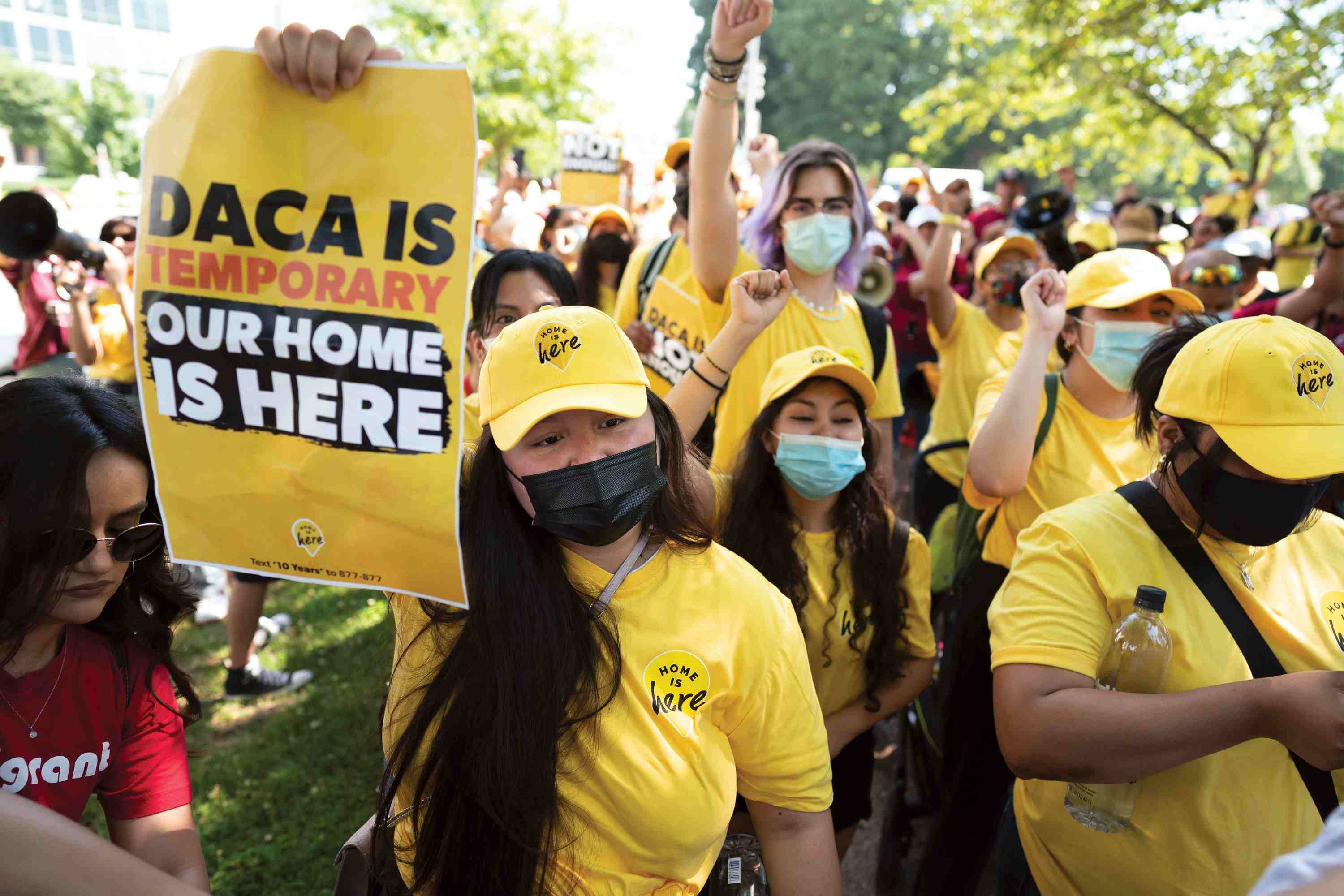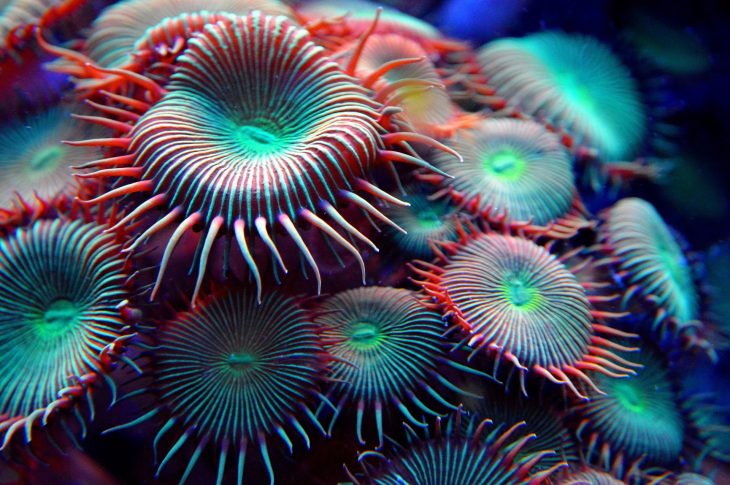
Sea anemones are animals that have an important role in the marine ecosystem. These plant-looking invertebrates serve as homes to numerous sea creatures such as cleaner shrimps and even clownfish like Disney’s Nemo. Despite looking like beautiful flowers that lie below the tides, however, sea anemones are quite fearsome predators. Get an in-depth look at these stinging sea creatures as you read these shocking sea anemone facts.
- There are over 1,000 species of sea anemones.
- There are 46 sea anemone families.
- Their tentacles are typically arranged in multiples of six.
- This six-fold symmetry is a feature that they share with stony corals.
- Sea anemones are 0.4 to 2.0 inches (1 to 5 centimeters) wide and 0.6 to 3.9 inches (1.5 to 10 centimeters) tall.
- Despite their plant-like appearance, sea anemones are actually animals.
- They are soft-bodied invertebrates.
- Most adult sea anemones are sedentary.
- Most of the sea anemone’s body is made up of water.
- The sea anemone gets its name due to its superficial resemblance to the terrestrial anemone flower.
- All sea anemones belong to the order Actiniaria.
- They fall under the phylum Cnidaria, along with jellyfish and corals.
- Unlike jellyfish, sea anemones stay in a polyp phase for their entire lives and do not have a medusa phase.
- Sea anemones lack any hard parts and typically do not fossilize. However, some rare fossils do exist, with the oldest dating back to the Cambrian period.
- Larger species tend to be more solitary, while smaller species often live in high concentrations in common territory.
- Some sea anemones glow under ultraviolet light.
- The venom of some species can help in research regarding treatment for lung cancer.
- Similar to jellyfish, sea anemones do not have brains. They also do not have hearts.
- They sometimes cover themselves with sand, shell fragments, and other particles to better protect their bodies.
- Sea anemones don’t have eyes and mostly rely on chemical and touch signals.
Sea anemones are powerful predators.
Although they may look like sea creatures that don’t do much, sea anemones can pack a serious punch. They are powerful predators despite being mostly sedentary animals. Sea anemones feed on a variety of prey organisms, including plankton, mollusks, crustaceans, and fish. In rare cases, large species of sea anemones may even feed on larger animals, such as seabirds.
They paralyze their prey with their tentacles.
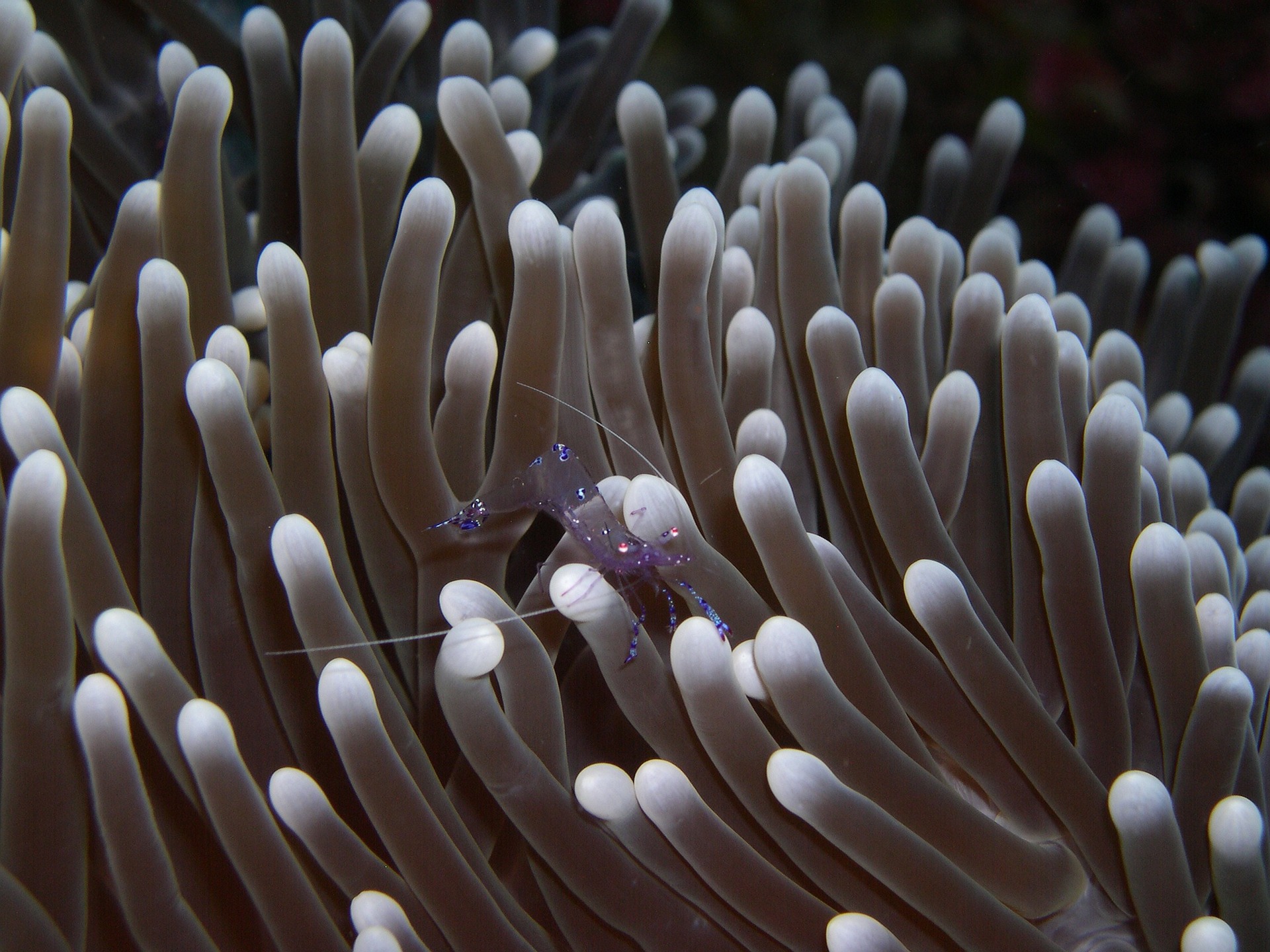
To get their food, sea anemones wait for their prey to get close enough to their tentacles. Once the victims are within reach, their tentacles will extend to catch and sting. Their tentacles are armed with specialized stinging cells called cnidocytes, similar to what a jellyfish has.
Even the slightest touch can trigger these cells to fire harpoon-like structures onto their unsuspecting prey. Through these structures, the sea anemone injects a potent toxin that will immobilize the prey. The tentacles will then draw the helpless prey into the sea anemone’s mouth, and digestion will begin. Additionally, these tentacles can also draw in food scraps that are floating by.
Sea anemones can be parasitic.
Despite most sea anemone species being successful predators in the ocean, some species also act as parasites on other marine animals. One notable example is the twelve-tentacled parasitic anemone with the scientific name of Peachia quinquecapitata. This species is parasitic on certain species of jellyfish. When the jellyfish ingest the larvae of this parasitic sea anemone, the larvae first eat the food particles in the jellyfish’s digestive system. As the anemone grows, however, it will begin to feed on the jellyfish’s gonads and later move on to their other tissues. Once the anemone develops into adulthood, it will detach itself from its host and live independently on the seafloor.
Some sea anemones have toxins that are strong enough to kill humans.
The venom of sea anemones consists of different toxins that are highly effective in paralyzing their prey. Although the vast majority are harmless to humans, some sea anemone species have highly potent venom that could potentially injure or even kill a person. The hell’s fire anemone (Actinodendron arboreum), for example, can cause painful skin ulcers. Some carpet anemones (Stichodactyla) can also cause anaphylactic shock and organ failure, both of which can potentially result in death.
Sea anemones can have a symbiotic relationship with algae, allowing them to get energy from photosynthesis.
Aside from getting energy from the prey they eat, sea anemones also can utilize energy from the sun by teaming up with algae. Sea anemones cannot undergo photosynthesis on their own, but they can employ the help of single-celled algae to provide them some products of photosynthesis.
The single-celled algae live within the cells of the sea anemones. They are especially common in their tentacles and oral discs, which are upward-facing parts that have access to sunlight. The algae provide oxygen and an extra food source for the sea anemones. In return, the sea anemones provide algae protection from herbivores and micro-feeders.
Clownfish live inside sea anemones.

One of the most notable sea anemone facts is that several species of fish and crustaceans live within the tentacles of sea anemones. Perhaps the most recognizable of which is the clownfish or anemonefish, which many of us may know because of the 2003 Pixar film Finding Nemo. The clownfish and the sea anemone have a mutualistic relationship, which means that both organisms benefit from each other.
Because of their stinging tentacles, sea anemones provide protection for clownfishes and provide a safe nest site for the fish. Clownfish can also feed on the scraps and dead tentacles of sea anemones. In return, clownfish can defend sea anemones from parasites and potential predators. The feces of clownfishes also provide a source of nitrogen for the algae that live within the bodies of the sea anemones. This can thus aid in the growth and regeneration of the sea anemones. Their bright coloration may also lure in small fish for the sea anemones to prey on. Clownfish can also provide steady water flow around the tentacles of sea anemones. This can help anemones grow larger and also aid in the respiration of the clownfish.
There are a few theories on why the sea anemones don’t harm clownfish. One theory suggests that the mucus coating of clownfish renders them undetectable to the stinging organelles of sea anemones. Another is that the clownfish evolved an immunity to the toxins of their host anemone species.
Boxer crabs carry sea anemones in their claws for protection.
Sea anemones and boxer crabs have an interesting mutualistic relationship as well. Boxer crabs or pom-pom crabs (Lybia) carry sea anemones around on their claws. This provides a layer of defense for the small crabs. The sea anemones, on the other hand, get access to more food as the crabs carry them around. Interestingly, when the boxer crabs lose the anemone in one claw, they cut the other anemone in half. Because some anemones can reproduce this way, the boxer crabs end up with one anemone for each claw again.
Similarly, some hermit crabs carry sea anemones around in their shells for protection. When they transfer from their old shells to new ones, they transplant the anemones to the new shells. Most notably, the hermit crab (Eupagurus prideauxi) and the sea anemone (Adamsia palliata) almost always live together.
Sea anemones can walk or even swim.
The bodies of sea anemones are mostly cylindrical, with the top part being the oral disc and the bottom part being its pedal disc or “foot”. They use their pedal discs to attach themselves to surfaces such as rocks, shells, and submerged wood. Some species can even burrow into sand and mud. Once they attach themselves to surfaces, they rarely move and may stay in the same spot for their entire life.
However, they can also use their feet to move around if the conditions are unfit for their survival. Sea anemones can walk or glide slowly using their pedal discs, although the movement is so slow that it’s practically impossible to notice with the naked eye. Some can detach themselves from surfaces and subsequently allow the currents to carry them to another area. The sea onion (Paranthus rapiformis) can even turn itself into a spherical shape and allow currents to roll it away. Other species, such as Gonactinia prolifera and Stomphia coccinea can actively swim to new locations by either using their tentacles or their bodies.
They can actively change their shape.
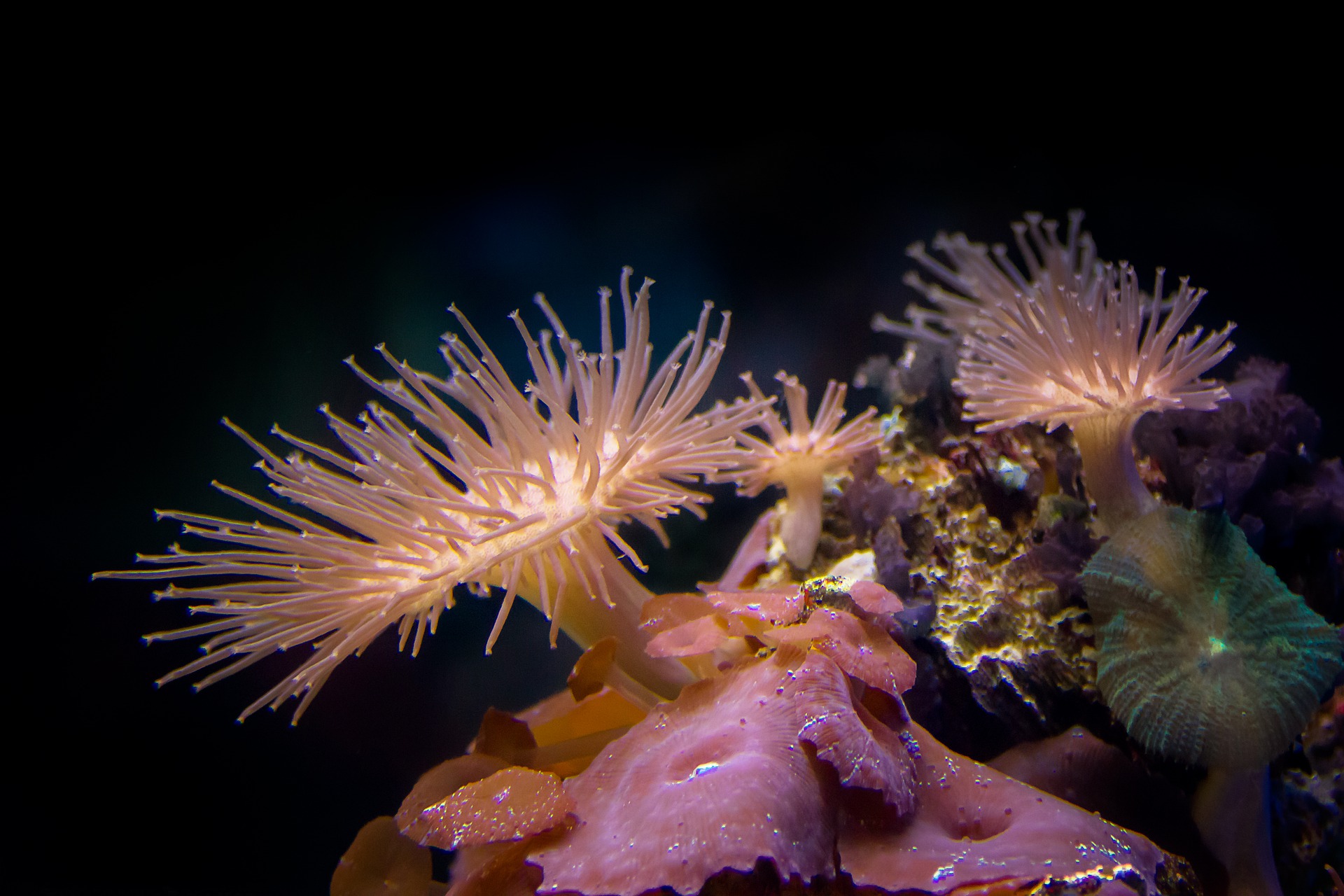
Although they don’t move around much, sea anemones can be quite animated creatures. Their muscular bodies are extremely flexible, and they can even turn their stomachs inside out. Moreover, they can fully retract their oral discs and tentacles inside of their bodies. Their tentacles also have muscle fibers that have vertical, horizontal, and diagonal orientations. This gives the tentacles a wide range of motion, allowing them to lengthen, contract, twist, and bend.
They can reproduce both sexually and asexually.
Sea anemones tend to grow and reproduce at a slow rate, but they have different methods of reproduction. They may use both sexual and asexual methods of reproduction. For sexual reproduction, the male sea anemones typically spray their sperm into the water. This stimulates the females to release their eggs, and fertilization occurs either in the water or inside the bodies of the female sea anemones. The resulting larvae become planktonic or free-floating organisms for a while before they settle on the seabed.
In asexual reproduction, they may reproduce through fragmentation or budding similar to plants. They may also reproduce by pulling themselves apart either horizontally or vertically. By reproducing asexually, they essentially create clones of themselves. The resulting individuals are genetically identical to the original sea anemone.
This article belongs to Facts.net and may not be reproduced, copied, edited, published, transmitted, or uploaded in any way without the permission of Facts.net.
Some species can change their sex at some point in their lives.
In some species of sea anemones, the sexes are distinct, with the males separate from females. Others, however, are sequentially hermaphroditic. This means that they can change their sex at a later stage in their development.
One notable example of this is the brooding anemone (Epiactis prolifera). Individuals from this species all start off as females. They then become hermaphrodites later on in life, and they develop both male and female reproductive organs. Thus, this species consists of older hermaphrodites and younger females. Female brooding anemones can breed without fertilizing their eggs. Hermaphrodites, however, can fertilize their own eggs and reproduce among themselves.
They can fight each other for their territory — and they can act like armies.
One of the most interesting sea anemone facts is that colonies of sea anemones can fight each other for territories. A great example of this is the aggregating anemone (Anthopleura elegantissima). These anemones reproduce by cloning, and colonies often share the same DNA. When one colony meets another colony that’s genetically different, the two colonies will battle with each other for their territory.
Aggregating anemones have special tentacles called acrorhagi. They use these special tentacles only to attack other anemone colonies and prevent them from invading their territories. These tentacles leave behind a peel of the skin and stinging cells, which can cause necrosis in the receiving anemones.
An interesting fact about these sea anemones is that they act as armies. Colonies of aggregating sea anemones keep a distinct space between their competing territories. Colonies have specific castes of scouts, warriors, and other types. They may sometimes send scouts within the space between the colonies. The warrior anemones of the other side then attack the invading scouts. When the scout returns to its original colony, its own clone mates will attack it, and this will signal the colony that there is a colony nearby.
The sea anemone’s mouth also serves as its anus.
The anatomy of a sea anemone can be rather odd. For instance, their mouths serve multiple purposes, not just for eating. Their digestive system only has one opening, which means that their slit-like mouth also functions as an anus. What’s even weirder is that these mouths also function as reproductive organs. Sea anemones eject their eggs, sperm, or larvae through their mouths.
Some sea anemones can grow to over 3 feet in diameter.
Sea anemones are remarkably diverse — they come in many different shapes and sizes. Typically, One of the smallest species of sea anemone, the storey anemone (Gonactinia prolifera), rarely grows bigger than a fifth of an inch (5 millimeters) long. On the other hand, some species such as the crusty red anemone (Urticina columbiana) and Mertens’ carpet sea anemone (Stichodactyla mertensii) can grow to over 3 feet (1 meter) in diameter. The giant plumose anemone (Metridium farcimen) also can grow to over 3 feet (1 meter) tall.
Sea anemones have a great regenerative ability.
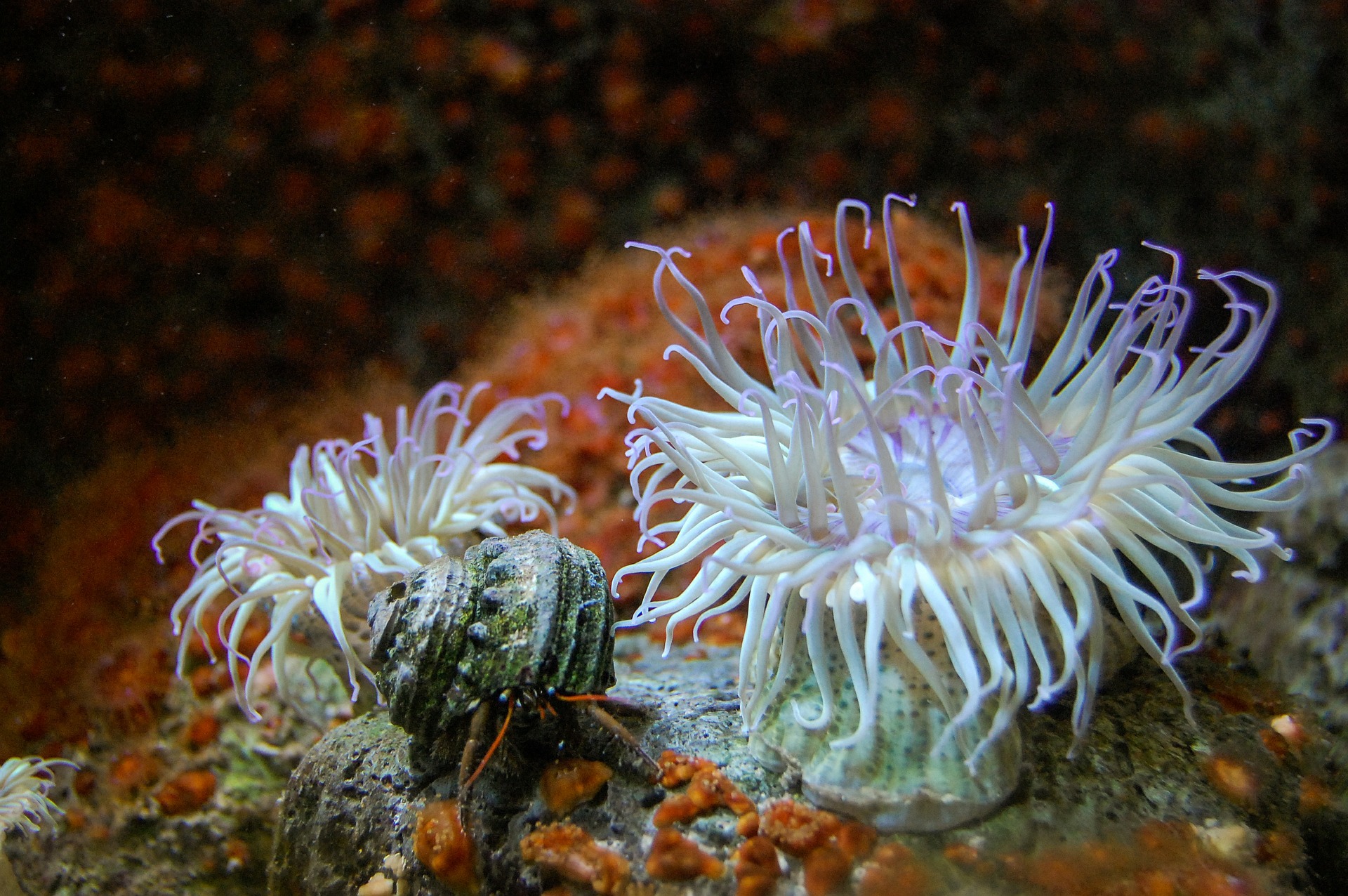
One of the most interesting sea anemone facts is that they have highly impressive regenerative abilities. Like sea stars, they have the ability to regenerate their limbs and grow new individuals from fallen body fragments. Because of this amazing ability, scientists are studying their genes to learn more about the mechanisms behind their regeneration. This could potentially have implications for improving healing and treating heart conditions in humans.
They can live up to 80 years.
Sea anemones prefer to take it slow — they grow at a slow pace and typically live quite long. Some species reportedly can live for decades. The magnificent sea anemone (Heteractis magnifica), for example, has been known to survive more than 80 years in captivity.
They live in a wide range of habitats.
Sea anemones live in various depths in a wide range of habitats. Some float just below the surface of the water, while others live in ocean depths of up to 33,000 feet (10,000 meters). Although most species thrive in warm tropical waters, some live in temperate regions.
One species of sea anemone, Edwardsiella andrillae, even lives on the underside of the sea ice near Antarctica. Scientists discovered this species in 2010, and they are unsure of how they can survive the freezing temperatures. They also know very little about its reproductive behaviors. Researchers speculate that this species feeds on the plankton that lives in the freezing waters.
Some sea anemones are edible to humans.
Although a few species of sea anemones can pose significant dangers to humans, most species are harmless and some are even edible. The snakelocks anemone (Anemonia viridis), for instance, is a valuable delicacy in southern Italy and southwestern Spain. Spanish locals call it ortiguillas de mar and typically marinate the anemones in vinegar, coat them in batter, and deep-fry them in olive oil.
They are popular among aquarium hobbyists.
Besides some species being edible, many aquarium hobbyists that have reef aquariums also keep sea anemones as ornamental pets. Sea anemones add an attractive variety of colors and textures inside the aquariums. Most species are quite sensitive to changes in temperature, pH, and oxygen levels, however, making them challenging to keep alive.
Their popularity in the pet trade can be a problem for sea anemone populations. Most specimens of sea anemones are harvested in the wild, and this can lead to overhunting in some areas.
They are important parts of the ecosystem.
The significance of these beautiful animals is often overlooked; they contribute more than just beauty to the marine ecosystem. Sea anemones are important predators in their local habitats, and they also serve as homes to different species of fish, algae, and crustaceans. Furthermore, they also serve as prey to some species of sea stars, snails, crustaceans, and fish. They promote species diversity in reef ecosystems and other habitats. Sea anemones face a variety of threats, however, such as poaching, water pollution, and climate change.
Was this page helpful?
Our commitment to delivering trustworthy and engaging content is at the heart of what we do. Each fact on our site is contributed by real users like you, bringing a wealth of diverse insights and information. To ensure the highest standards of accuracy and reliability, our dedicated editors meticulously review each submission. This process guarantees that the facts we share are not only fascinating but also credible. Trust in our commitment to quality and authenticity as you explore and learn with us.


